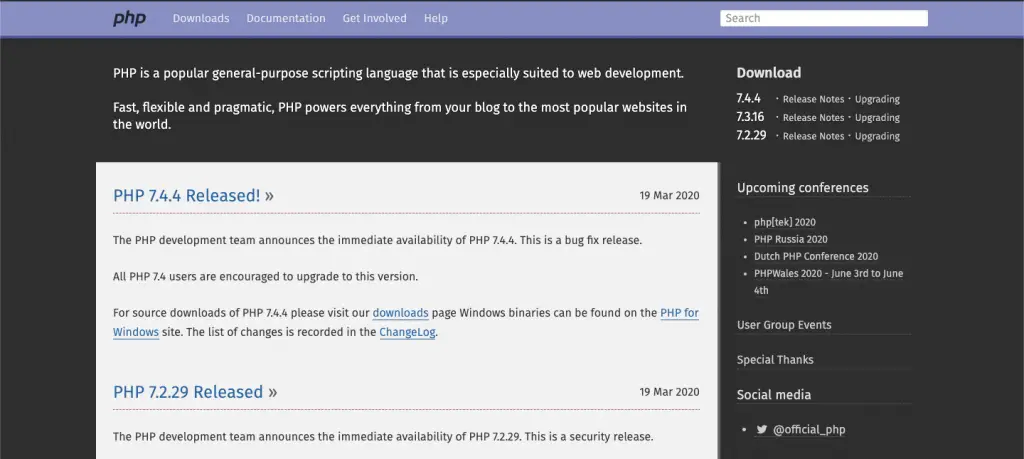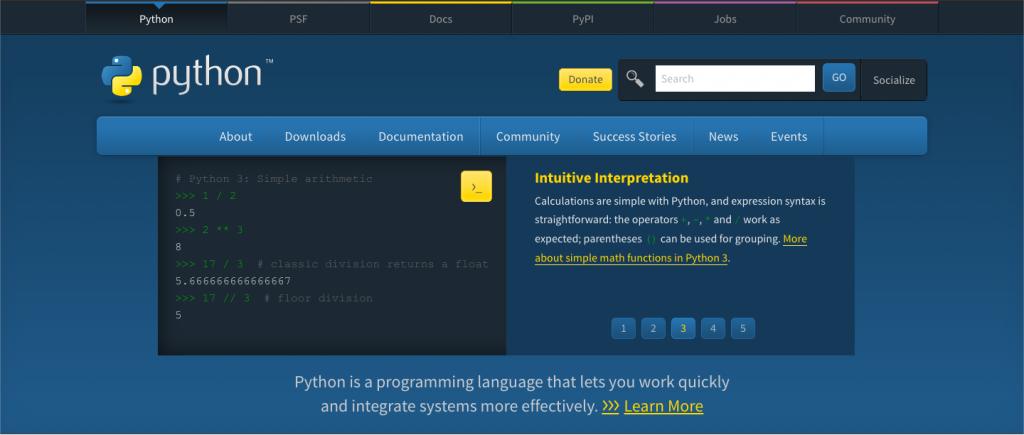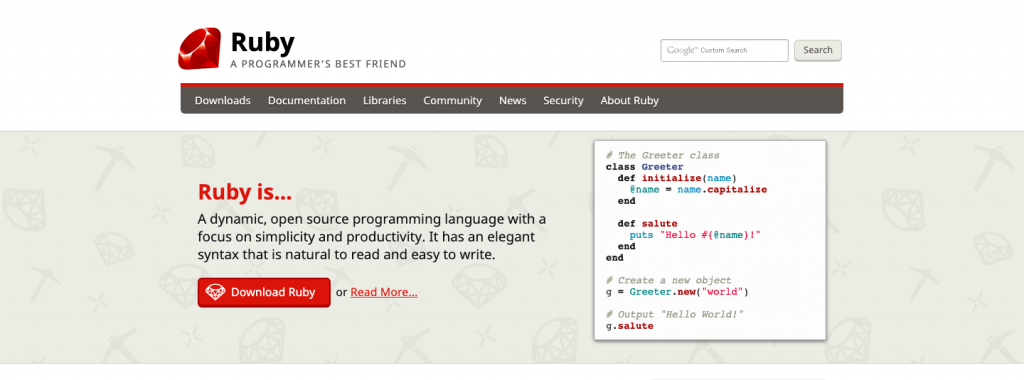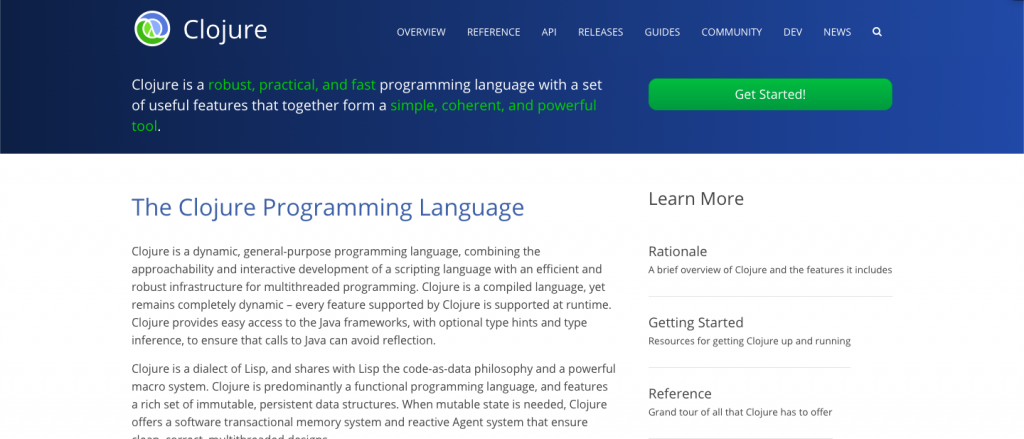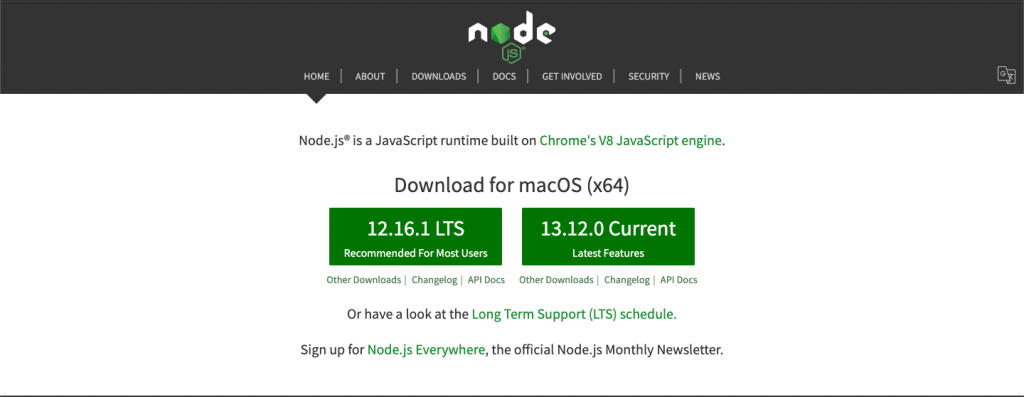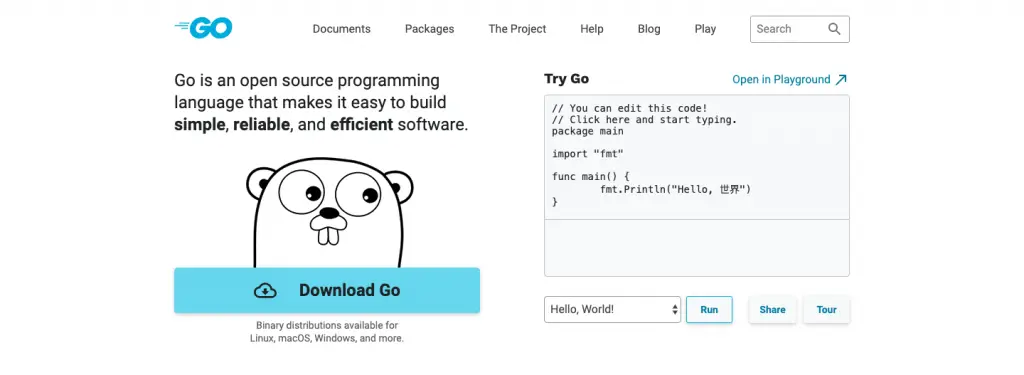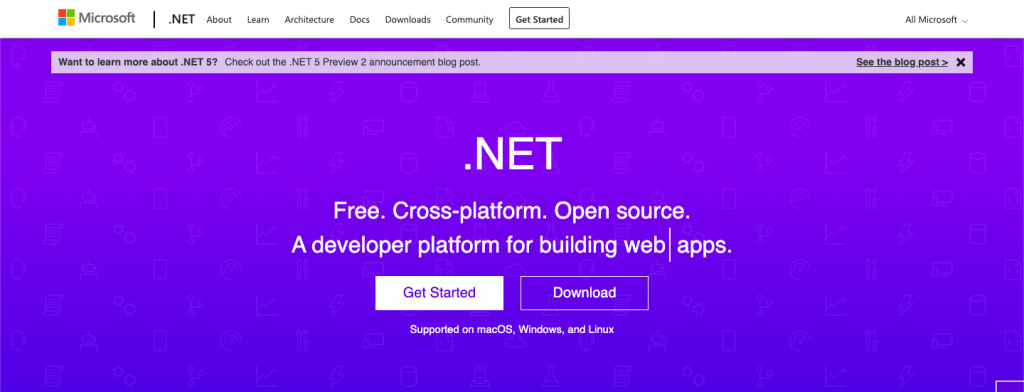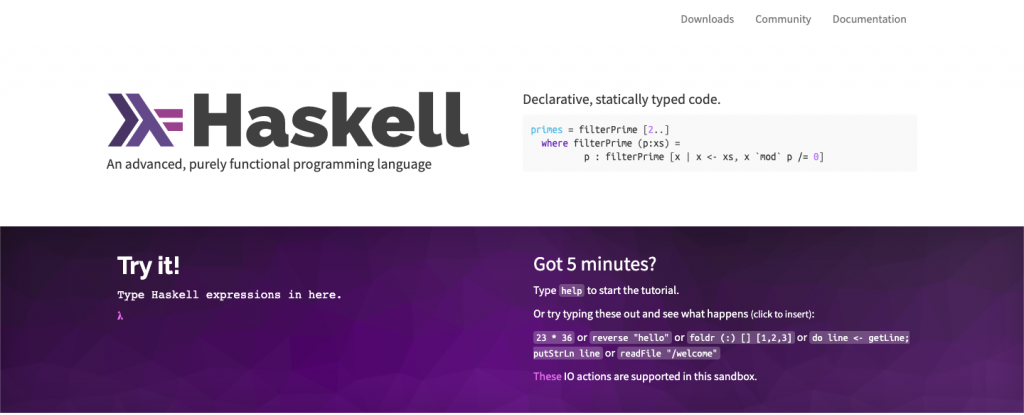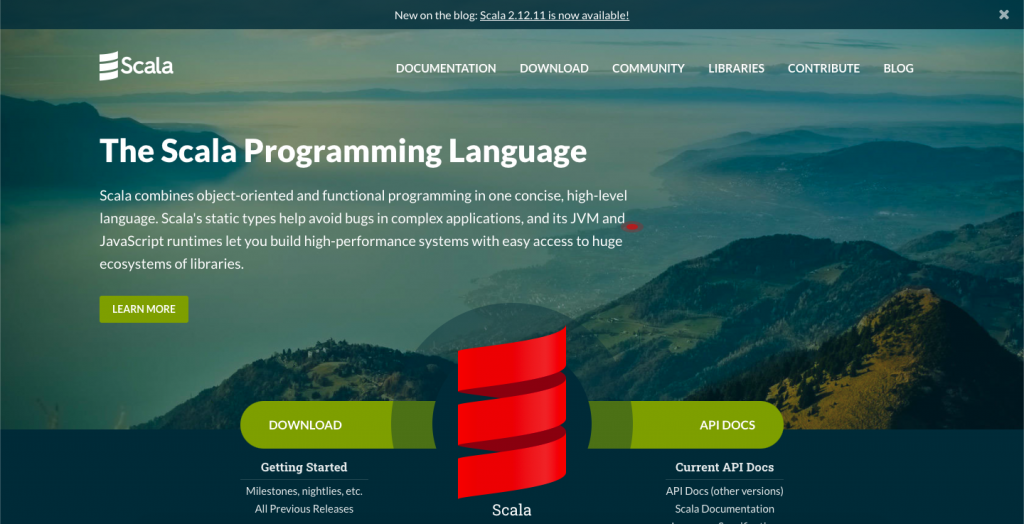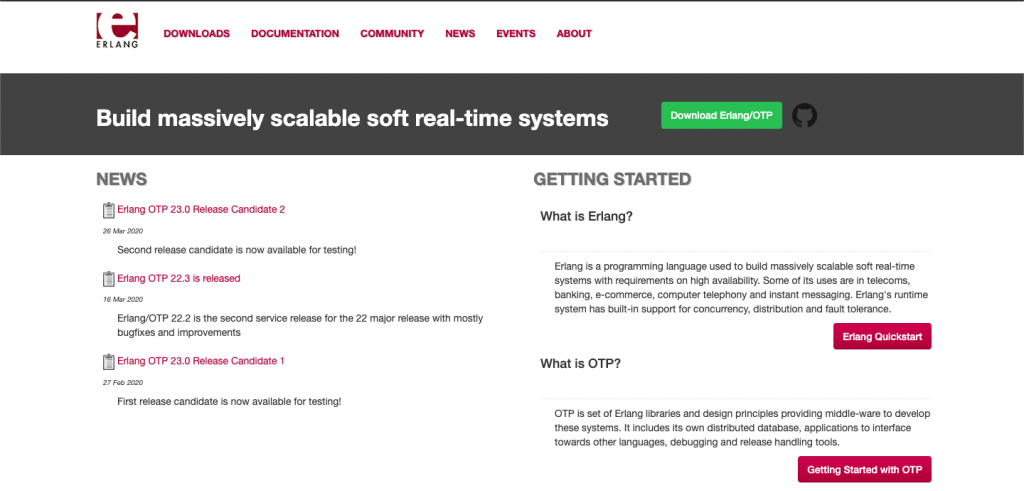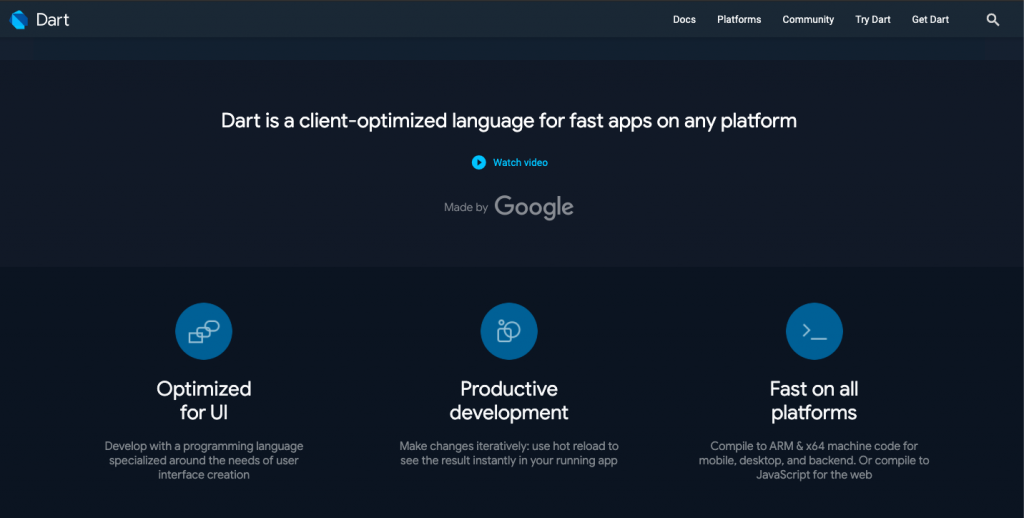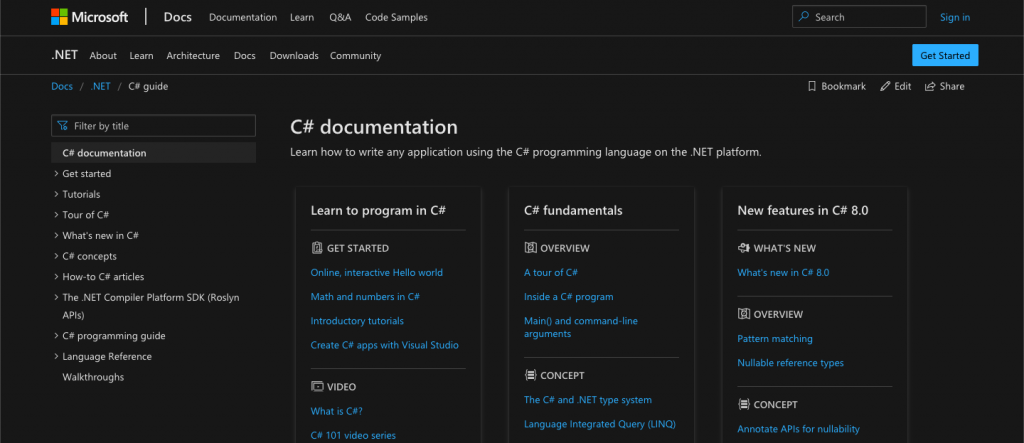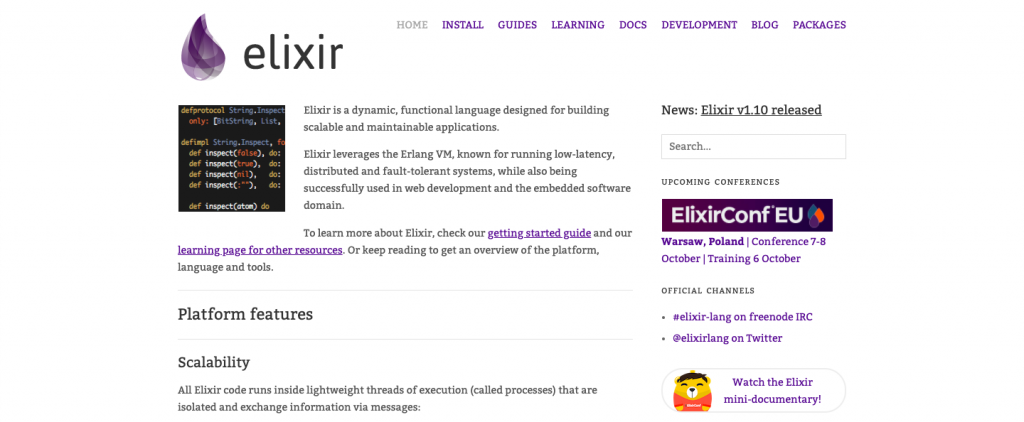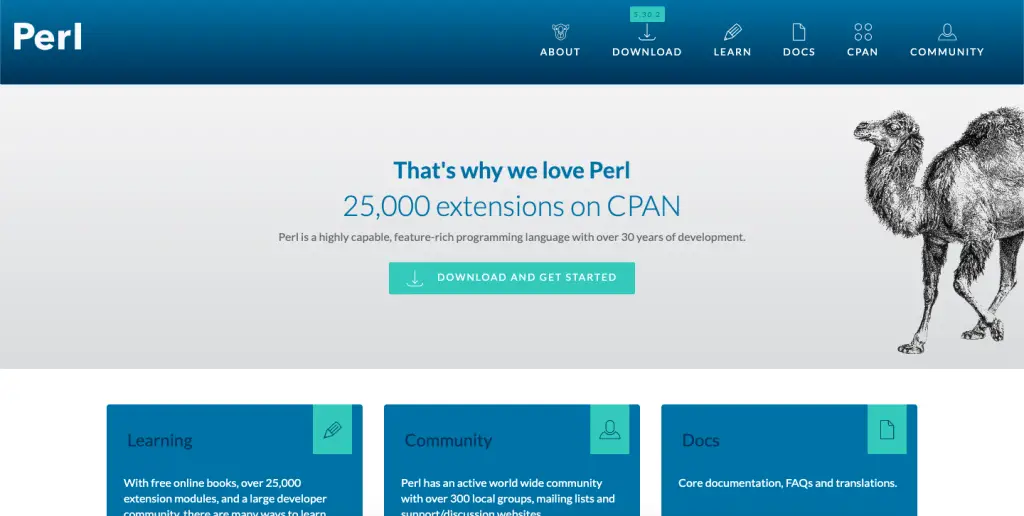Web development languages is a very broad list of programming languages. It contains web development languages like HTML, CSS, MySQL, PHP and so on. But how do you know which web development language is best suited for your requirements?
I hope you wouldn’t prefer a web development language which is not even able to handle 1000 hits, right? In this list, we won’t be covering the web development languages like HTML or CSS. This list actually contains serverside web development languages. So here we go:
-
PHP

PHP stands for – Personal Home Page, but it now stands for the recursive backronym PHP: Hypertext Preprocessor. It was designed by Rasmus Lerdorf. First appeared 1995; (25 years ago). It is one of the oldest and most popular web development languages PHP is a scripting language that helps people make web pages more attractive by allowing them to do more intelligent, complex things. Its code is run on the webserver. A website programmed with PHP can have pages that are protected with a password. A website with no programming can’t do this without other complex things.
Standard PHP file extensions are: .php, .phtml, .php4, .php3, .php5, .php7, .phps, .php-s, .phar, but a web server can be set up to use any extension.The structure of PHP was influenced by many programming languages like C, Perl, Java, C++, and even Python. It is considered to be provided as free software by the Free Software Foundation.
-
Python

Python is an interpreted, high-level, object-oriented programming language. It is developed by Guido V. Rossum and first introduced in the year 1991. It’s language constructs and goal-oriented approach aim to help programmers write clear, logical code for small and large-scale projects.
Python is dynamically typed and uses garbage collection. It supports multiple programming paradigms, including procedural and functional programming. Python is often described as a „batteries included“ language because of it’s the comprehensive standard library.
It was designed in the late 1980s as a successor to the ABC language. Python 2.0, which was released in 2000, showed features like list comprehensions and a garbage collection system capable of collecting reference cycles. Python 3.0, which was released in the year 2008, was a major advancement of the language drawback that is not completely backwards-compatible, and much Python 2 code does not run unmodified on Python 3.
The Python 2 language, i.e. Python 2.7.x, was officially discontinued on 1st January 2020 (first planned for 2015) after which security patches and other improvements will not be released for it. With Python 2’s end-of-life, only Python 3.5.x and later are supported and accessed.
Python interpreters are available for various operating systems. A global community of programmers designs and maintains CPython, an open-source reference implementation. A non-profit organization, the Python Software Foundation, manages and develops resources for Python and CPython development.
-
Ruby

Ruby is an open-source, interpreted, reflective, high-level, and one of the best web development languages with a focus on simplicity and productivity. It has an elegant syntax that is normal to read and easy to write. It was designed and introduced in the mid-1990s (25 years ago) by Yukihiro „Matz“ Matsumoto in Japan.
Ruby is dynamically typed and uses garbage-collected. It supports multiple programming paradigms, including procedural, goal-oriented, and functional programming. According to the developer, Ruby was influenced by Perl, Smalltalk, Eiffel, Ada, Basic, and Lisp.
Ruby is also totally free. Not only free of cost, but also free to use, copy, modify, and distribute. Ruby is said to be a flexible language since it permits its users to freely alter its parts. Essential parts of Ruby can be removed or redefined, according to one’s will. Existing parts can be added upon. Ruby tries not to restrict the coder. The main objective of Ruby’s development was to make it act as a sensible buffer between human programmers and the underlying computing machinery.
-
CLOJURE

Clojure is a high-level functional programming language, merging the approachability and influencing the management of a scripting language with a vigorous and well-organized infrastructure for multiple threaded programming. It is designed by Rich Hickey and it was first appeared in 2007 (13 years ago).
Clojure is a compiled language, yet remains completely vital – every feature supported by Clojure is supported at runtime. It provides convenient access to the Java frameworks, with optional type hints and type inference, to ensure that calls to Java can avoid reflection.
Clojure is a dialect of Lisp and shares with Lisp the code-as-data philosophy and a high-power macro system. It is primarily a functional programming language and features a rich set of immutable, persistent data structures. When mutable state is required, Clojure language provides a software transactional memory system and reactive Agent system that ensure clean, correct, multithreaded designs.
-
Node.js

Node.js is an open-source, cross-platform runtime environment to develop server-side and networking applications. It allows developers to use JavaScript to write command-line tools and for server-side scripting—running scripts server-side to make dynamic web page content prior to the page is sent to the web browser of the user. So, it shows a „JavaScript everywhere“ paradigm, merging web application management into an individual programming language, instead of distinct web development languages for server and client-side scripts.
Though .js is the standard filename extension for JavaScript code, the name „Node.js“ does not refer to a specific file in this context and is solely the name of the product. Node.js has an event-driven architecture capable of asynchronous input/output. These design choices are to improve throughput and scalability in web applications with various I/O operations, as well as for real-time web applications (For example- real-time communication programs and browser games).
The Node.js distributed development project was previously managed by the Node.js Foundation and has now merged with the JS Foundation to form the OpenJS Foundation, which is facilitated by the Linux Foundation’s Collaborative Projects program.
Some of the corporate users of Node.js software include GoDaddy, Groupon, Uber, IBM, LinkedIn, Microsoft, Netflix, PayPal, Rakuten, SAP, Voxer, Walmart, and Yahoo!
-
Golang/Go

Go/Golang is an open-source, statically typed, compiled programming language that makes it compatible to build reliable and efficient software. It is designed at Google by these three people- Robert Griesemer, Rob Pike, and Ken Thompson. Go language is somewhat same as C, but with the plus-points of the safety of memory, garbage collection, structural typing and CSP-style concurrency. The language is often referred to as „Golang“ because of its domain name, golang.org, but the proper name is Go. Go was first appeared on November 10, 2009, i.e. about 10 years ago.
There are two major implementations:
-
- Google’s self-hosting compiler toolchain targeting various operating systems, mobile devices, and Web Assembly.
- gccgo, a GCC frontend. A third-party transpiler GopherJS compiles Go to JavaScript for front-end web management.
-
.NET

NET Framework is pronounced as „dot net“. It is a software created by Microsoft that works mainly on Microsoft Windows. It consists of a large class library called Framework Class Library (FCL) and provides language interoperability across various programming languages. Programs are written for .NET Framework execute in software called Common Language Runtime (CLR). The CLR is an application virtual machine which provides services such as security, memory management, and exception handling. As such, computer code written by using .NET Framework is known as „managed code“. FCL and CLR together form the .NET Framework.
.NET Framework started as proprietary software, although the firm worked to standardize the software stack almost immediately, even prior to its first release. Despite the standardization efforts, developers, primarily those in the free and open-source software communities, expressed their unease with the chosen terms and the prospects of any free and open-source implementation, especially regarding software patents. Since that time, Microsoft has reformed. .NET designing and managing to more intensely follow a present model of a community-designed software project, also includes issuing an update to its patent promising to address the concerns.
-
Java

Java is a general-purpose programming language that is concurrent, class-based, goal-oriented, similar to C++, but with advanced and simplified features. It is free to use and can run on all platforms. It aims to let application developers “write once, run anywhere” (WORA), meaning that compiled Java code can run on every platform that supports Java without the need for recompilation.
Java is developed by James Gosling with his other team members named Mike Sheridan and Patrick Naughton also known as Green Team in 1995 for Sun Microsystems for digital devices such as set-top boxes, televisions etc.
Java has been used in different fields. Some of them are as follows:
-
- Banking: To deal with transaction management.
- Retail: Billing applications that you see in a store/restaurant are completely written in Java.
- Information Technology: Java is developed to solve implementation dependencies.
- Android: Applications are either written in Java or use Java API.
- Financial services: It is used in server-side applications.
- Stock market: To write algorithms as to which company they should invest in.
- Big Data: Hadoop MapReduce framework is written using Java.
- Scientific and Research Community: To deal with a large amount of data.
-
RUST

RUST is a systems programming language focused on speed and safety, especially safe concurrency. It is a very low-level language. It is syntactically similar to C++ language but provides safety of memory without using garbage collection.
Rust was initially introduced by Graydon Hoare at Mozilla Research, with contributions from Dave Herman, Brendan Eich, and others. Rust first appeared on July 7, 2010, i.e. 9 years ago. The designers refined the language while writing the Servo layout or web browser, and the Rust compiler. Since 2016, Rust has been the „most loved programming language“ in the Stack Overflow Developer Survey every year.
-
Haskell

Haskell is named after logician Haskell Curry. It is a widely used and popular purely functional language. Functional programming is based on mathematical functions. Haskell created over 30 years ago by researchers from a consortium of major universities. Besides Haskell, some of the other popular web development languages that follow Functional Programming paradigm are-Lisp, Python, Erlang, Racket, F#, Clojure, and much more. It is more efficient and intelligent than other famous web development languages such as Scala, PHP, and so on.
Benefits of Haskell:
-
- Reduce the high rate of software project drawbacks and billions of dollars wasted on the bug fix/maintenance/rewrite cycle.
- Accelerate time to market by 30%-50%.
- Improve product quality.
- Increase programmer productivity.
- Scale-up dramatically, with included support for multi-core and cloud computing.
- Improve data quality with Haskell’s powerful, extensible datatype system.
-
Scala

Scala stands for Scalable language. Scalable language is a general-purpose, high-level, multi-paradigm (concurrent, functional, imperative, object-oriented) programming language. It is invented by Mr Martin Odersky and his research team on 20 January 2004 (16 years ago).
Scala is a purely goal-oriented programming language which also provides help and support to the functional programming approach. Scala programs can convert to bytecodes and can run on the Java Virtual Machine (JVM). It also provides Javascript runtimes. Scala is highly influenced by Java and some other programming languages such as Lisp, Haskell, Pizza etc.
Some key features of Scala are as follows –
-
- Scala is capable to work with the data which is stored in a Distributed fashion. It accesses all the available resources and provides support to parallel data processing.
- Scala supports Immutable data and it has support to the higher-order functions.
- Scala is an upgraded version of Java which was developed to eliminate unnecessary code. It provides support to multiple Libraries and APIs which will allow the programmer to achieve Less Down Time.
- Scala supports multiple type Constructs which enables the programmer to work with wrappers/container types easily.
-
Erlang

Erlang was introduced by Ericsson to aid in the development of software for managing a number of various telecom projects, with the first version being released in the year 1986, and the first open-source release of the language in the year 1998. You can see this in the extended Erlang release information where the Open Telecom Platform (OTP), the application development platform for Erlang, exists as the only method of delivering the Erlang development environment. Erlang provides a number of standard features not found in or tough to manage in other web development languages. Most of this functionality exists in Erlang because of its telecom roots.
For example, Erlang includes a very simple concurrency model, allowing individual blocks of code to be executed various times on the same host with relative ease. In addition to this concurrency, Erlang uses an error model that permits drawbacks within these processes to be identified and rectified, even by a new process, which makes building highly fault-tolerant applications easy to access. Finally, Erlang includes built-in distributed processing, allowing components to be run on one machine while being requested from another machine.
-
Dart

Dart is a client-optimized programming language for applications on multiple platforms. It is developed by Google and its primary purpose is to leverage C-based languages like C++, C#, and Java. Dart is used to create mobile, desktop, server, and web applications. It is designed by Lars Bak and Kasper Lund.
Dart is a goal-oriented, class-based, garbage-collected language with C-style syntax. It can compile to either native code or JavaScript (JVP). It provides support to interfaces, mixins, abstract classes, reified generics, and type inference.
-
F#

F# (pronounced F sharp) is a general-purpose, strongly typed, multi-paradigm (functional, imperative, metaprogramming, object-oriented, reflective, concurrent) programming language. It was first appeared in the year 2005 (15 years ago). F# is most commonly used as a cross-platform Common Language Infrastructure (CLI) language, but it can also give rise to JavaScript and Graphics Processing Unit (GPU) code.
F# is developed and maintained by the F# Software Foundation, Microsoft and open contributors. An open-source, cross-platform compiler for F# is provided from the F# Software Foundation. F# is also a supported language in Visual Studio and Xamarin Studio. Other tools supporting F# development consists of Mono, MonoDevelop, SharpDevelop, MBrace, and WebSharper.
-
C#

C# (pronounced as C Sharp) is a programming language developed by Microsoft that runs on the .NET Framework. It is a modern, goal-oriented, and type-safe programming language. C# has it’s rooted in the C family of languages and will be immediately familiar to C, C++, Java and JavaScript programmers.
C# is an object-oriented language, but C# further consists of support for component-oriented programming. Contemporary software structure increasingly relies on software components in the form of self-contained and self-explaining packages of functionality. Key to such components is that they present a programming model with properties, process and events. They have attributes that provide declarative knowledge about the component. They incorporate their own documentation. C# comes up with language constructs to support directly these concepts, making C# a natural language in which to develop and use software components.
Some features of C# aid in the construction of robust and durable applications. Collection of garbage automatically reclaims memory occupied by unreachable unused objects. Exception handling gives a structured and extensible approach to error detection and recovery.
C# has a unified type system. All C# types, including primitive types such as int and double, inherit from an individual root object type. Consequently, all types share a set of common operations, and values of any type can be stored, transported, and operated upon in a consistent manner. Moreover, C# hold up both user-defined reference types and value types, allowing dynamic allocation of objects as well as in-line storage of light-weight structures.
To ensure that C# programs and libraries can evolve over time in an easy manner, much emphasis has been placed on versioning in C#’s design. Many programming languages pay little attention to this problem. Consequently, programs written in those other languages break more often than essential when newer versions of dependent libraries are developed.
In more recent versions, C# (C sharp) has embraced other programming paradigms. C# has consisted of features that support functional programming techniques like lambda expressions. Other new features support separating data and algorithms, such as pattern matching.
-
Elixir

Elixir is a programming language introduced in the year 2011 by José Valim. It’s creator previously worked on creating Ruby on Rails, which is now one of the top global coding languages. Roughly speaking, Elixir is an improvement of Erlang. Yet, this language is different from Ruby and Erlang in many forms. Elixir is a functional language (its flow resembles mathematical functions), developed for the purpose of building scalable and maintainable web applications.
This coding language leverages Erlang VM that is used for distributed and fault-tolerant systems and running low latency. To put it at ease, Erlang VM perfectly supports systems that consist of many networked computers that should pass large volumes of data to each other with very small delays and work uninterruptedly if one or some of them experience some failures. Elixir developers work with the Phoenix framework in most scenarios. Phoenix takes some of the top characteristics of Ruby on Rails and takes them to a whole new level of performance. Thanks to Phoenix which also runs on the powerful Erlang VM, Elixir creators are able to crank up speed and maintainability without compromising quality.
-
Perl

Perl is a programming language with general purposes. It supports both procedural and Object-Oriented programming. It is a lot similar to C language syntactically and is compatible with the users who have knowledge of C, C++. Since Perl is a lot similar to other commonly used web development languages syntactically, it is easier to code and learn in Perl. Programs can be written in Perl in any of the commonly used text editors like Notepad++, gedit, and so on.
Salient features of Perl are as follows:
-
- Perl takes the best features from other languages, such as C, awk, sed, sh, and BASIC, among others.
- Perl’s database integration interface DBI supports third-party databases including Oracle, Sybase, Postgres, MySQL and so on.
- It works with HTML, XML, and other mark-up languages.
- It supports Unicode.
- Perl is Y2K compliant.
- Perl supports both procedural and object-oriented programming.
- It Is extensible. There are over 20,000+ third party modules available from the Comprehensive Perl Archive Network (CPAN).
- The Perl interpreter can be embedded into other systems.


